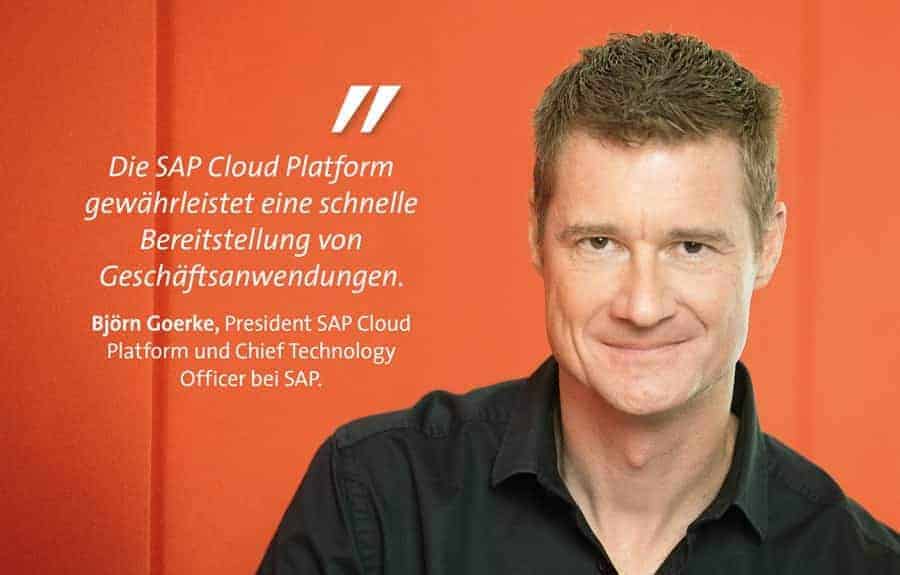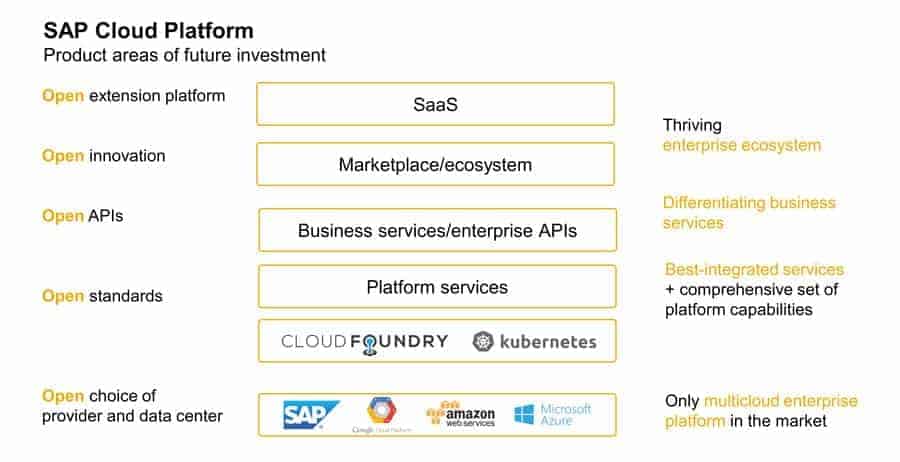Cloud Computing with SAP, AWS, MS Azure and Google


Market surveys show the path toward multicloud and analysts also seem to be convinced of the concept. Björn Goerke, President SAP Cloud Platform (SCP) and Chief Technology Officer at SAP, used forceful words to promote SAP's multicloud concept with its friendly competitors AWS, Microsoft and Google at the DSAG Technology Days in Stuttgart earlier this year.
From SAP's point of view, flexibility at the base naturally makes sense, because it gives SAP the appearance of being open to the world and compatible. With Hana, S/4 and the new SAP Data Hub, the core processes are already in place.
The Data Hub is designed to enable existing customers to build, harmonize and control data pipelines. In addition, data can be reused. For users, this means they can extract heterogeneous information from distributed systems, for example from hybrid and multicloud environments.
Forrester Consulting's "Multicloud Arises from Changing Cloud Priorities" study shows that 86 percent of enterprises have a multicloud strategy.

The study is based on the responses of 727 decision-makers employed worldwide in companies with more than 1000 employees who are responsible for cloud technologies.
In addition to cost savings, performance and innovation are also cited as reasons for the move to multicloud. Furthermore, a large majority of respondents plan to maintain or increase cloud investments over the next two years, including resources for internal staff and external providers.
Today, the cloud is a commodity. Cloud services and cloud technology have long been established in companies in the form of public cloud and private cloud. Multicloud is the next evolutionary step on the way to seamless and automated provision of IT resources and business platforms. In recent years, technologies, solutions, frameworks and deployment models have been developed and optimized in rapid succession.
They have great potential for improving internal processes, increasing profitability or even digitizing processes and business models.
To gain detailed insights into current cloud computing implementation plans, challenges and success factors, IDC surveyed IT and business decision makers from 200 organizations with more than 100 employees in Germany in August 2018. All of the companies surveyed have extensively engaged with cloud services and cloud technology.
The status of cloud computing in Germany can be clearly assessed as established. Cloud is anchored in 90 percent of the companies surveyed, either as part of the IT strategy or even as part of the corporate strategy. Almost half of the companies have integrated the cloud strategy into the corporate strategy.
According to the aforementioned Forrester study, nearly three out of four enterprises plan to re-evaluate their cloud strategy or develop a new strategy within the next two years. The study authors also pointed out that the future strategy for the cloud should take care to better align cloud technologies and key business objectives.
When asked about their company's cloud goals for this year, 42 percent of respondents said operational efficiency was their top priority, followed closely by innovation and revenue growth.

Most enterprises today are using a multicloud strategy to optimize performance and achieve their business goals. In addition, the Forrester study states: "No single cloud platform meets all of an organization's workload needs."
As a result, organizations are using multiple public and private clouds for their various applications. In most cases, performance is the top priority when it comes to "matching workloads with the cloud environment" - it even surpasses the criteria of compliance and security.
IT executives surveyed cited a variety of use cases for multicloud platforms and believe a multicloud approach brings many benefits - such as improved IT infrastructure management and flexibility (33 percent), better IT cost management (33 percent) and improved security and compliance (30 percent).
In addition, the study shows that companies prefer those providers that offer a high level of help and support when selecting a cloud provider.
Another finding of the Forrester study is that IT professionals are most often involved in cloud vendor selection (52 percent). A select group of C-suite managers are also involved in the selection process, with the CIO being the most involved (34 percent).
"Multicloud is a clear sign of the next era of cloud computing. Whether to balance risk or to leverage the benefits and application options of different cloud platforms: Enterprises are increasingly moving their workloads to multiple cloud providers"
explained Deepak Patil, senior vice president, product and technology at Virtustream, which commissioned the Forrester study.
IDC's findings are similar to those of Forrester: more than two-thirds of the companies surveyed by IDC use the cloud in more than one use case or workload.
Depending on the requirements for compliance, security, cost-effectiveness or agility of the use cases, the use of the various deployment models will continue to intensify. Data-driven applications in particular will migrate to the cloud across the board.
In the next twelve months, for example, according to IDC, 91 percent of companies plan to run Big Data, 87 percent business intelligence and data warehousing, and also 87 percent enterprise applications (ERP and CRM) primarily in the cloud (public, private cloud in the provider data center, or private cloud in their own data center).
These are primarily workloads that require scalable resources. Mapping traditional IT silos in the cloud wastes a lot of potential. Multiclouds are therefore a promising approach for challenging and breaking up existing infrastructures.
For the introduction of new IT solutions, the companies surveyed are evaluating cloud solutions in an increasingly targeted manner. 23 percent first regularly check whether a solution is available in the cloud for the relevant use case.
A further 39 percent evaluate cloud and non-cloud solutions on an equal footing. IDC expects the cloud-first approach to become even more prevalent over the next 12 to 24 months.
The high attractiveness of the multicloud is based on an overarching, integrated and automated provision of IT resources and business platforms, for example internal data center services and external cloud services.
However, using a multicloud is not a no-brainer, but rather a demanding and complex task. And different definitions of multicloud still exist.
From IDC's perspective, one can speak of a multicloud when either two services of the same "cloud types" are offered by IT in an integrated manner, including monitoring and compliance, or off-premises applications can be connected ad hoc via API with on-premises applications.
As many as 44 percent of respondents share IDC's view of the multicloud. The remaining 56 percent understand multicloud to mean the use of cloud service offerings from different external cloud providers, the use of different cloud deployment models, i.e. public and private cloud, or the provision of infrastructure capacities from a defined private cloud pool to a public cloud pool if required.
Multiclouds are without question still a young topic in this country. This gives rise to many questions with regard to the efficient management of different cloud providers and cloud services. These are disciplines that user companies cannot handle alone.
IDC believes that providers of all types of solutions for the multicloud have an obligation to educate and meet organizations where they are on their cloud journey. Cloud computing has successfully initiated the disruption of IT usage and will continue to drive it hand in hand with other technological developments.
After providers and data center providers initially addressed the issue, numerous companies are now increasingly evaluating the possibilities of multiclouds based on a central cloud platform. However, just 15 percent of respondents are currently using a multicloud.





